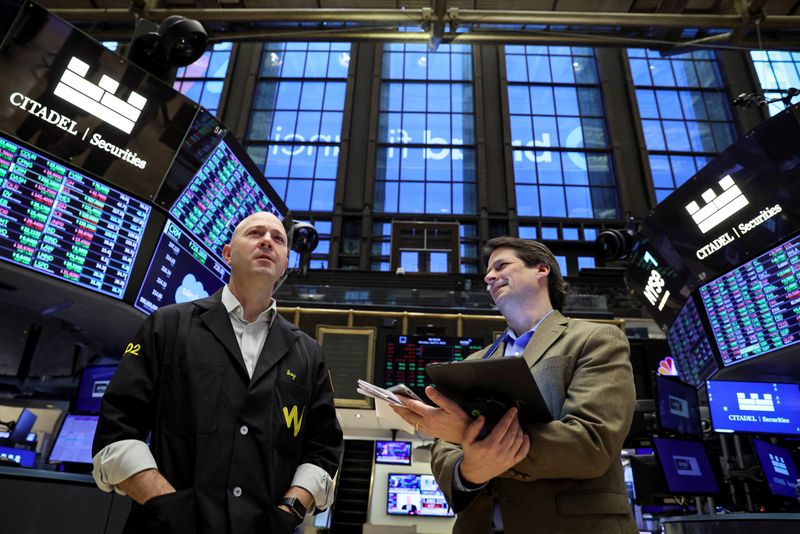Select Language

S&P 500 stocks cut some losses Monday, but ultimately ended lower after swinging widely during the session amid ongoing speculation on whether President Donald Trump will offer countries a path toward negotiating reprieves on tariffs.
At 4:00 p.m. ET, the Dow Jones Industrial Average dropped 349 points, or 1.2%, the S&P 500 index gained 0.2%, while the NASDAQ Composite added 0.04%.
The benchmark indices had opened sharply lower Monday, continuing the selloff seen at the end of last week, which had seen the broad-based S&P 500 index tumble over 10%, erasing nearly $5 trillion in market value, marking its most significant two-day loss since March 2020, the onset of the COVID-19 pandemic.
Trump reiterates no pause on tariffs; threatens to raise China tariffs following retaliation; talks to start with Japan
In a press briefing on Monday, Trump reiterated that the United States wasn’t considering pausing the reciprocal tariffs that have wrecked havoc on markets.
Earlier in the session, stock saw a brief reprieve on unconfirmed reports that U.S. President Donald Trump was considering pausing his sweeping trade tariffs for 90 days on all countries except China. The White House later debunked this as "fake news", but the short-term jump in stocks illustrates the jitteriness of the market after two brutal days of selling.
Trump, in a post on Truth Social media shortly after 11 AM ET, stated that the United States will impose an additional 50% tariff on Chinese goods if China does not rescind its recent 34% tariff hike by April 8, 2025. This ultimatum follows China’s retaliatory tariffs and other trade practices that Trump has labeled as abusive.

